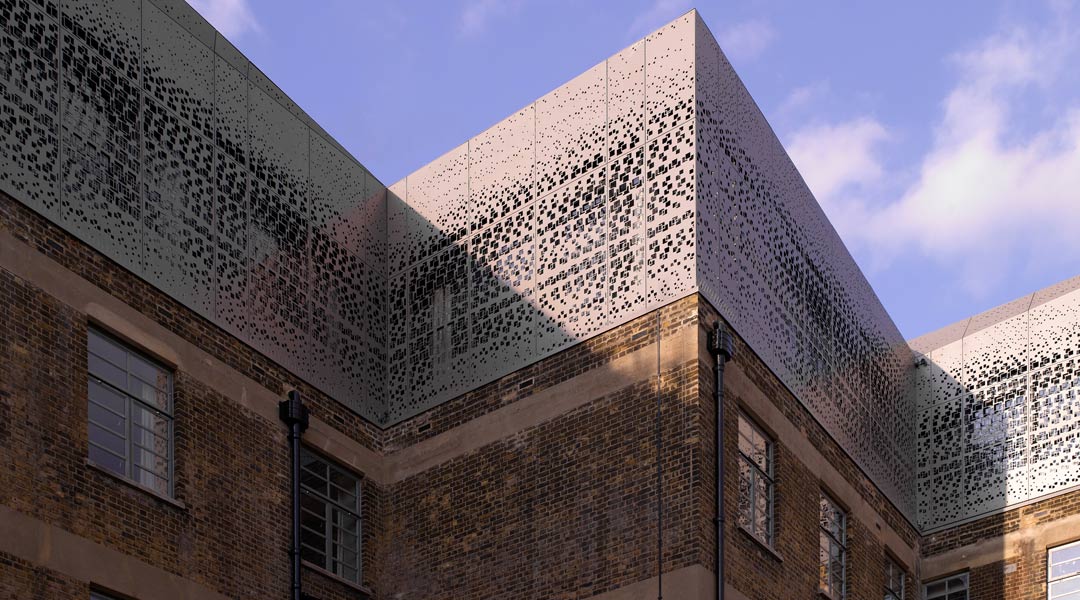
Hotelier Loh Lik Peng’s fascinating fear and Unlisted collection of hotels
Loh Lik Peng has tremendous guts but says he’s often filled with fear. He advises others to do their numbers, but in his own business, he never sticks to budget. He loves starting new hotels but doesn’t like running them. He loves working with designers but will only work with them once. People are convinced he has amazing foresight but he claims he’s just lucky.
After attending a session at the Design Business Summit in Singapore, architect Joseph Javier and I sat down for a chat with Loh, who proved an eminently qualified guest at the Summit to speak on the topic Design Transforms Business.
Design will play a more pivotal role in determining the outcome of commercial success. – Design Business Chamber Singapore manifesto
[one_third padding=”0 20px 10px 0″]
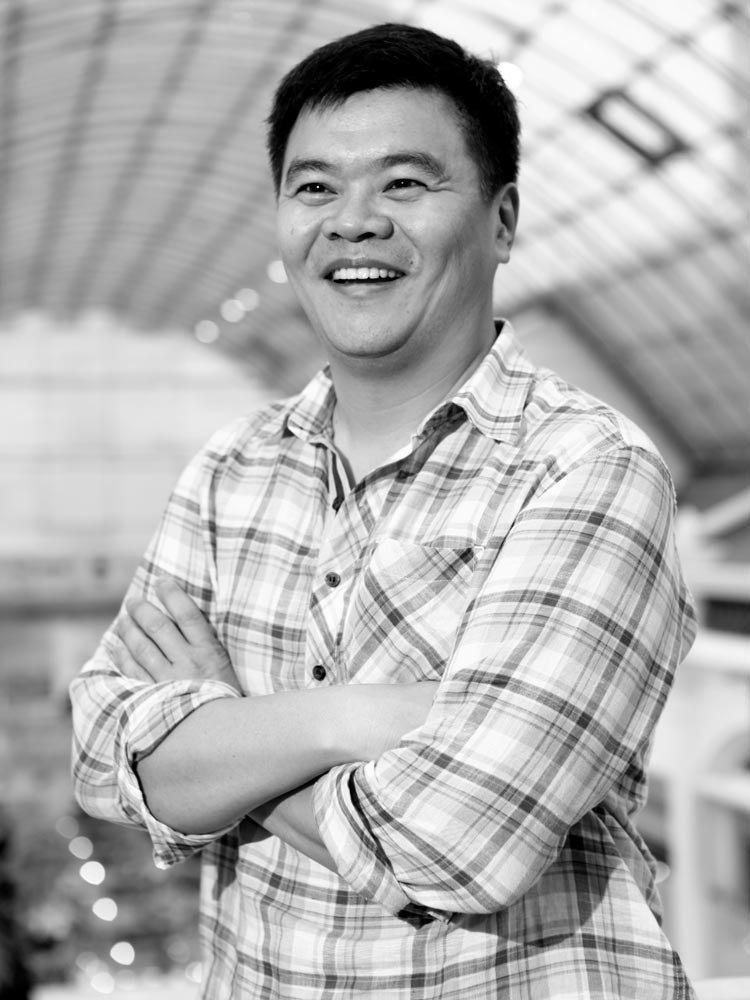
Does design transform business or does business transform design, we ask Loh. He answers in rapid fire, with expressive hand gestures, his body sometimes moving along to emphasize a point: “It works both ways. To succeed in this day and age, businesses need a high degree of customization that requires a very smart design and focus. If you use design to distinguish you from your competitors, you’re going to be eaten alive! At the same time, design businesses need people like us to employ them, because they are fundamentally also businesses. You can’t design and feed on thin air and water, you know! These guys want a career, they want success, and so they need to make a business out of design. So it works both ways. We are symbiotic.”
Loh’s symbiotic relationship with designers in Singapore began a little over ten years ago with the purchase and renovation of a run-down building nobody wanted—a brothel gone out of business in Chinatown’s red light district.
“When I opened my first hotel in 2003, the Singapore Tourism Board (STB) wouldn’t give me the time of day! Certainly my mother thought I was insane! Everybody there was doing hourly rates, and STB wasn’t convinced that I wasn’t also going to charge hourly rates, or that any decent tourist or local would be crazy enough to want to go there!” Loh recounts. We all (including our guide from STB) burst into laughter.
Loh persisted and opened Hotel 1929, so named after the year the original structure was built. “And then SARS came!” Loh exclaims. We moan in sympathy.
READ MORE: 2 PH projects shortlisted in World Architecture Festival 2018
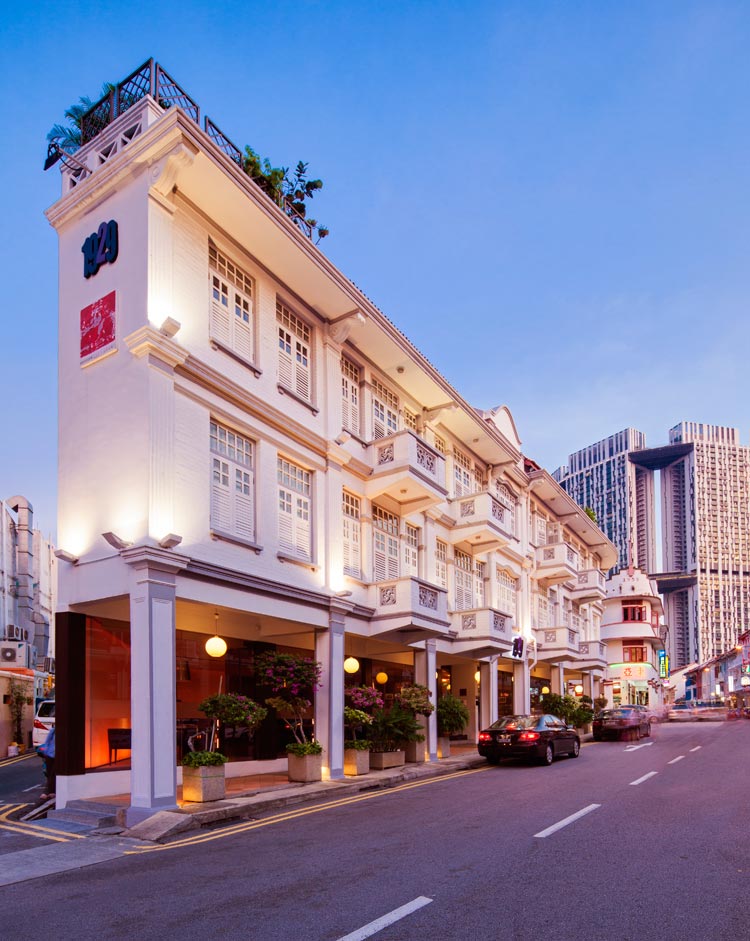
Still, Loh peristed. Eventually, the dreaded Severe Acute Respiratory Syndrome that had stricken China, Hong Kong and 36 other countries went away. Business started picking up, and in 2005, STB awarded him the New Tourism Entrepreneur Award. Loh’s transformation of the derelict row of shop houses into chic Hotel 1929 had had a transformative effect on the neighborhood. As the novelty of dining in style and enjoying luxurious comforts in a former prostitution den in old Chinatown attracted artists, bohemian types and curious travelers, 1929’s neighbors began cleaning up their act.
Eleven years later, Loh is in the middle of construction of his seventh boutique hotel in Sydney, which the Australian press is calling “one of the world’s most anticipated boutique hotels.” As with his previous six purchases, the two adjacent heritage-listed buildings he bought are located in the “grittier” part of town. Just like the other properties of Loh’s company, Unlisted Collection, these will be transformed by restoring the old structures as sensitively as possible for adaptive reuse as a cutting edge lifestyle concept hotel. And, like all Loh’s Unlisted Collection hotels, this one is expected to make property values in the neighborhood go up.
Design is a game changer especially for cities that have no natural resources except human talent – DBCS manifesto
Javier: How immersed are you in the design process?
Loh: Very. We work closely with the designers. At the same time, I am always very careful to give them a lot of autonomy. Our brief is usually very short. We tell them, “Hey, there’s this really cool building, and we’d like it to have this number of rooms.” Then pretty much we leave them to get on with designing.
Javier: You did say during the Summit that the design need not be expensive.
Loh: Yes, I believe strongly in that.
Javier: So you scout for talents that are on the rise?
Loh: Yes, I always want to work with younger designers who have no preconceived notions, who don’t have a huge portfolio behind them.
Torres: How do you choose if they don’t have a deep portfolio?
Loh: A lot of it is chemistry. You speak to someone, you have a chat with them, their get to know their philosophy, and you realize they have a lot of talent not just by looking at the things they’ve done before, but having a lot of fresh ideas and a willingness to explore.
READ MORE: RT+Q revamps a house from the ’60s into a breezy terrace house
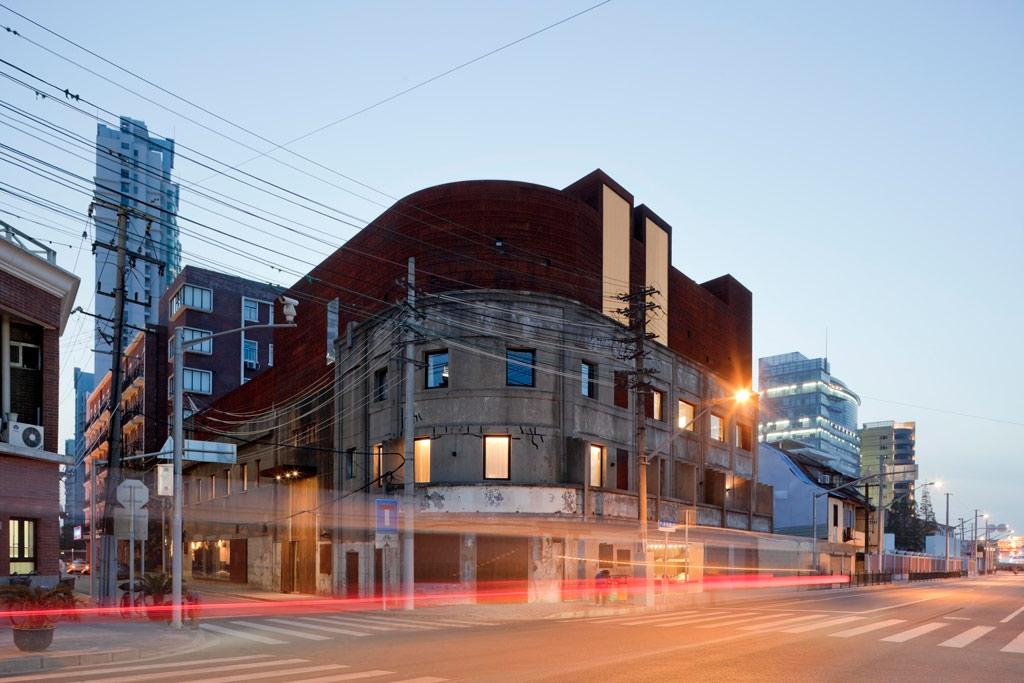

Javier: Is the risk compensated for by the lower design fee?
Loh: Honestly, no, because actually the fee is just a low single digit percentage of the whole project cost! So it’s not about that. It’s about getting someone with a lot of energy. Because if you go to a big firm and you have relatively small project—our projects are relatively small—you’re gonna get shunted to the third-line guy anyway!
Javier: Right, right, so—
Loh: Might as well go straight to the guy who’s REALLY going to put his energy into it! That’s really what I look for. Whereas you go to a big firm, and they’ll be, “Yeah, yeah, we really want to do your project!” But then you see the boss once every quarter. Or he might turn up at one or two site meetings during the entire project. That’s the reality, because they need to focus where the profit margin for them is worth it.
Torres: So you deal only with indies?
Loh: Yes, almost exclusively we work with small independent firms, firms that are no more than five or six people, where you have real dialogue and communication with the top man.
It will be impossible to sell anything without design; it is not hard to envision its ubiquity around every corner. – DBCS manifesto
Torres: And you don’t repeat designers.
Loh: I never do.
Torres: Because?
Loh: Because for me, it’s the first of interactions working with an architect that are always the most interesting! You learn new things from new people all the time, so we always consciously choose to work with new designers, just to start the process from scratch!
Javier: Wow, that’s very progressive model.
Loh: A much harder way of working, to be honest. You establish a relationship all over again and you go through the whole process all over again, but to me it’s always exciting because you get that very FRESH experience every time you work with someone with new. You get different perspectives all the time.
READ MORE: Don Lino creates reclaimed stone collage in this bungalow renovation

Torres: It’s funny that you create destinations, and yet you sound like the sort of guy who loves the journey more than the destination!
Loh: Ah yes, to me it’s all about the journey! Actually, I don’t like running the hotels when they’re done. Because then it becomes more about the business. The day-to-day running of it is not really much fun anymore, or creative.
Torres: I read that your advice to hotelier wannabes is, “Do your homework because a hotel is a costly beast to run, and if you don’t get the formula right, it’s going burn a big, big hole in your pocket.”
Loh: Yes.
Torres: But you don’t sound like you follow formulas. Or do you?
Loh: Haha! We don’t, really. What I am very aware of is that hotels ARE expensive things to run. There’s a very high capital cost, you have a very high overhead, you have permanent staff all the time that you have to feed… You sometimes see people building hotels that are almost like vanity projects, and you just know that it’s not gonna work. And when it doesn’t, it’s a very costly lesson. So fundamentally, we do look our numbers. Your expenses run into the millions—you can’t set up a hotel with a few hundred thousand. Certainly, in Singapore, it’s just not possible.
Javier: Isn’t it more expensive to acquire heritage property than build a brand new boutique hotel?
Loh: Yes, yes, yes, but it’s the kind of thing that really rocks my world! [Laughter] It is much easier to build a brand new building and still cater to the same market. But for me, I love old buildings, I love the history, I love the character, I love restoring them, I love doing new things in them… it’s really just what gets my juices flowing.
Javier: Does the more expensive business model also yield more?
Loh: It depends on the market and the time you enter the market. If you look at 1929 and New Majestic, Singapore was a different place economy-wise when we acquired those buildings. We just had the Asian crisis; Singapore was in recession. Frankly, it was dirt cheap to pick up these buildings. If you try to do the same thing now with property prices as they are, your ROI is on a totally different scale. If you ask me to do it now, it would not work.
That’s true in London too, you know. When we first bought Town Hall, the east side of London was a really decrepit place. Hotels are property based, you know, and if you enter the right time, it almost doesn’t really matter what you do. The returns can be quite good. If you enter the wrong time, even if you have a great product, it’s an uphill climb, because the largest part of the investment is the property.
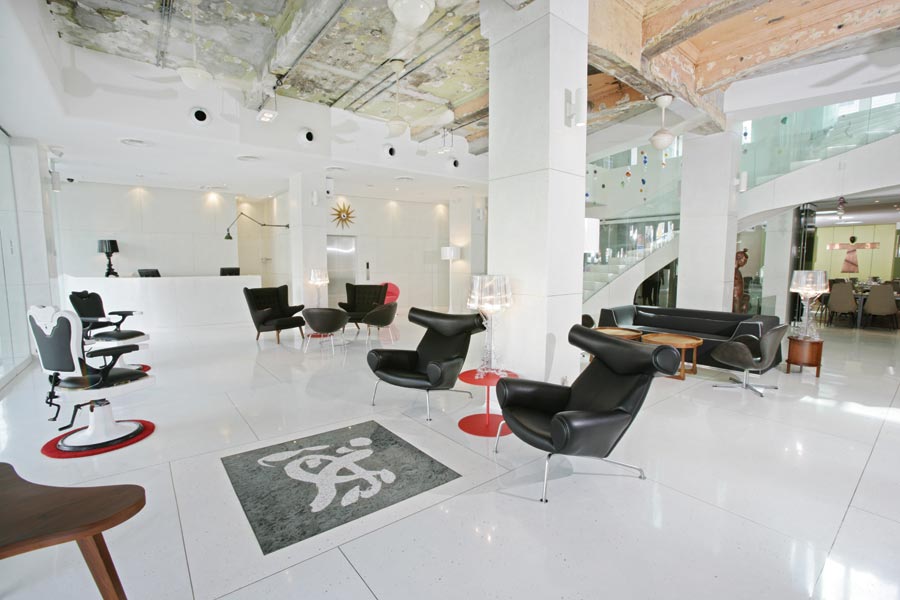
Torres: Have you dealt with designers who hate talking business?
Loh: Yes, sometimes.
Torres: How do you coax them out of that?
Loh: Well, designers have to understand ultimately that it’s for their own good why they have to treat their profession as a business. It’s the same thing with chefs! I talk to chefs all the time, and all they want to do is open the best restaurant with the most extravagant ingredients. They ALL have a very romantic notion of how they want to do their restaurants. And I always tell them that is a horrible mistake because you will be out of the business in three months. Ultimately, you have to mix the creative side with the business side. Chefs and designers, especially the young ones, they don’t always understand that.
Torres: How does that give and take with the designers work when you’re starting a new hotel?
Loh: Well, in the early phase of our dialogues with designers we usually have a very open brief so that everything is on the table, you can propose ANYTHING. We NEVER discuss budget. It’s always about: “What’s a cool space, what’s a cool thing to do here?” At the end of the day, when you whittle down everything, a budget still has to be imposed, right? We still have the discipline of timing, budget and what can be done physically. But those things we never discuss at the start.
Torres: Why?
Loh: Because it gets in the way of what we can talk about, and the things that we can try and put into a project and make it interesting. If you start with a budget, everyone has a kind of a box around the head, “Oh, we can’t do this!” So it doesn’t open up as many possibilities. So often, we start out with ALL the possibilities, and then the budget expands because we’ve THOUGHT of the possibilities.
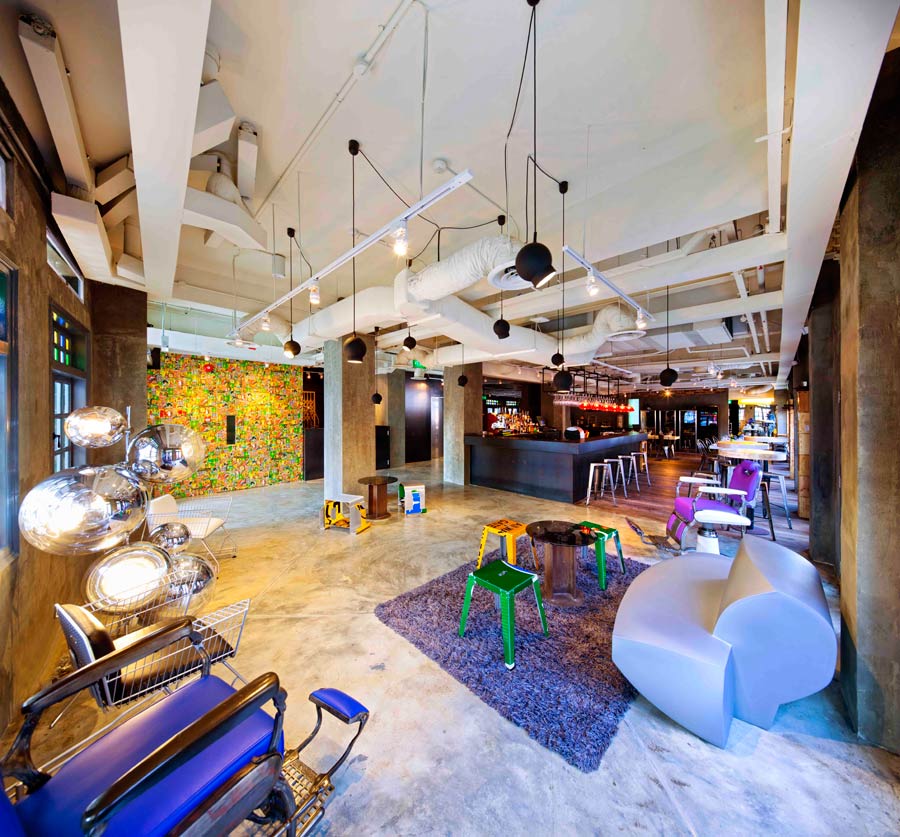
Torres: Oh! I thought you were going to say that you start with the big idea first, and then whittle it down.
Loh: No, no, no. Often we say, “Wow, that’s really cool, okay, we’ll spend a bit more!” Internally, at the back of my mind somewhere, I have a budget that I start out with, and often the budget goes up simply because we come out with all these great ideas, because I never discuss budget with the designers at the start.
Javier: Your CFO must have a very hard time managing you! [Laughter]
Loh: Yeah! But ultimately, you still have to have the discipline of thinking about dollars and cents because it still is a business. But yeah, we always say to our chefs and designers: “What’s the MOST we can do?” I want people to think of the craziest thing they could do. Although reality is, 99 times out of 100 you can’t do everything you want. It’s not just because of budget, sometimes the idea’s just not buildable. But it’s great to hear those ideas! And sometimes, little bits of those great ideas weave their way into the budget.
The role of designers is to make the world a better place. – DBCS manifesto
Torres: Are you fearless?
Loh: No. I always start out a project with a lot of fear! [Laughter] You need it. It drives you. That seed of insecurity and fear. You gotta be constantly going, “Wow! How am I going to make this work?” You need to be fearful!
Javier: I think you contradict yourself! [Laughter]
Loh: I’m always very afraid when I start a project! When you have that seed of fear, you’re like, “Man! If this fails I’m in deep trouble!”
Torres: Have you ever failed?
Loh: Yes, yes, plenty of times! Not with the hotels, luckily, but the restaurants. We’ve had concepts that didn’t work.
Torres: What do you do?
Loh: You shut them down and you learn a lesson. That’s the only thing to do! You can’t be too sentimental about it. You’ll have some regrets, but you move on, you’ve got to move on because if you dwell on it for too long, you may never do anything else. ![]()
This article first appeared in BluPrint Special Issue 1 2014. Edits were made for Bluprint online.
Images courtesy of Design Hotels and Unlimited Collection


